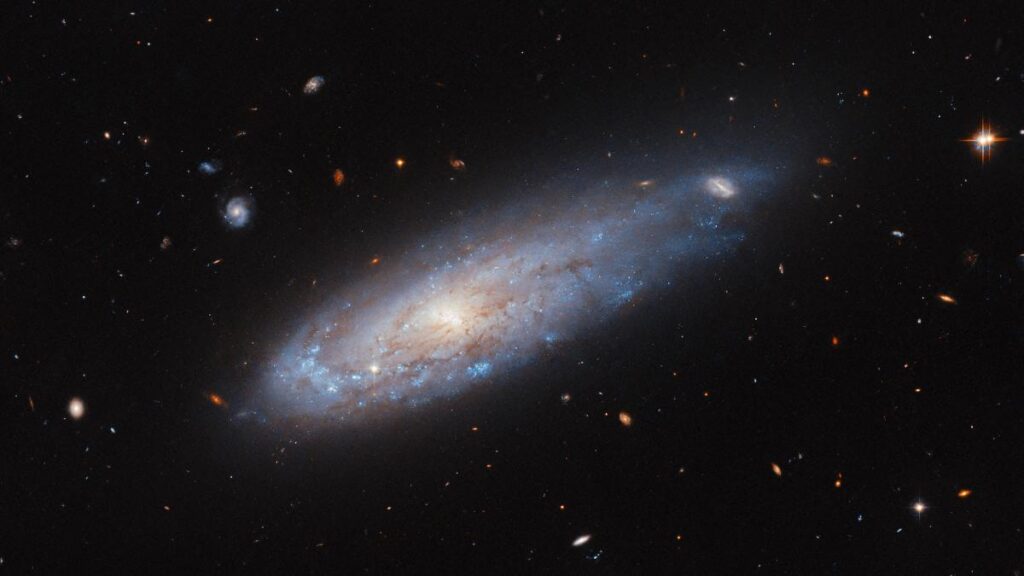The spiral galaxy IC 3225, situated about 100 million light-years away in the constellation Virgo, has recently garnered attention for its unusual appearance and dynamic characteristics. Upon first glance, IC 3225 may resemble other well-known spiral galaxies, such as the Milky Way, showcasing a bright, glowing core surrounded by scattered dust. However, upon closer inspection, the galaxy reveals signs of distress: one side features a dense spiral arm populated with vibrant blue stars, while the opposite side exhibits a chaotic, starless region that resembles a tail. This peculiar morphology has led astronomers to describe IC 3225 as though it were launched from a cannon, zipping through space akin to a comet, trailing a stream of gas behind it.
NASA’s Hubble Space Telescope captured this striking image of IC 3225, contributing to ongoing research into the behaviors and interactions of galaxies within clusters. Within the vast cosmos, galaxies are seldom solitary; they usually exist in groups held together by gravitational forces. IC 3225 is part of the Virgo Cluster, a collection of over 1,300 galaxies that gravitate around a common center in the Virgo constellation. The sheer density of galaxies in this cluster creates a rich field of hot gas, referred to as the “intracluster medium,” which plays a crucial role in the phenomenon observed in IC 3225.
The substantial mass present within the Virgo Cluster results in galaxies moving rapidly, which can create a significant effect known as “ram pressure.” This phenomenon arises when galaxies pass through the intracluster medium, leading to the stripping away of gas from their structure. Astronomers believe that IC 3225 has moved away from the cluster’s core but has experienced this ram pressure, resulting in the observable effects of its star-forming region and the chaotic tail. This encounter has likely led to the loss of gas that would typically facilitate ongoing star formation, thereby contributing to the starless appearance of portions of the galaxy.
Another hypothesis points toward gravitational interactions with neighboring galaxies as a possible cause of IC 3225’s irregular shape. When galaxies come into close proximity to one another, the gravitational forces exerted by the masses can distort their structures. This gravitational deformation could explain the unusual tail-like feature observed in IC 3225’s morphology. The galaxy’s distinct dynamic suggests it may have experienced significant encounters with other members within the cluster, resulting in the stretched and chaotic appearance now documented by astronomers.
The Virgo Cluster is not only a home to IC 3225 but also part of an expansive network of galaxies and groups. In addition to the 1,300 galaxies within the cluster itself, there are over 100 other galaxy groups orbiting it, collectively referred to as the Virgo Supercluster. This vast assembly extends 100 million light-years across and showcases the intricate web of gravitational interactions and clustering that defines galaxy formation and evolution in the universe. The Virgo Supercluster is itself a component of an even larger structure known as Laniakea, which encompasses around 100,000 galaxies.
In summary, the case of IC 3225 illustrates the complex interplay of forces at work within galaxy clusters. Its unique appearance—characterized by a vibrant side filled with blue stars and a chaotic, gas-trailing opposite—underscores the consequences of rapid motion and gravitational interactions within the Virgo Cluster. As further observations from telescopes like Hubble continue to provide insights into such galaxies, our understanding of their formation, evolution, and the nature of the universe as a whole will grow deeper, revealing even more of the majestic intricacies of galactic life.

